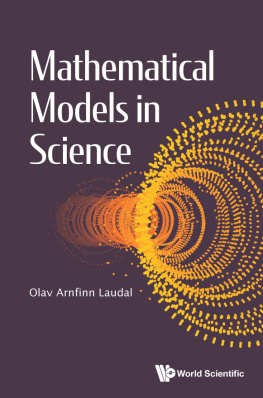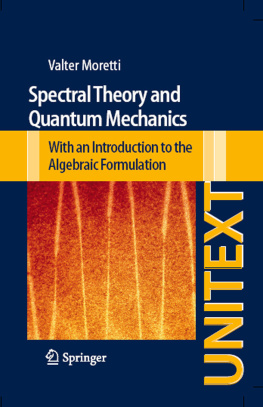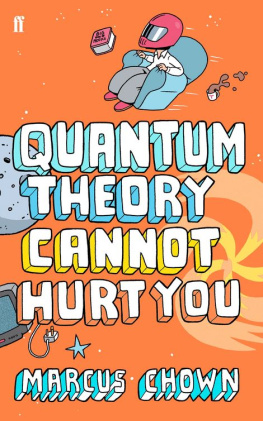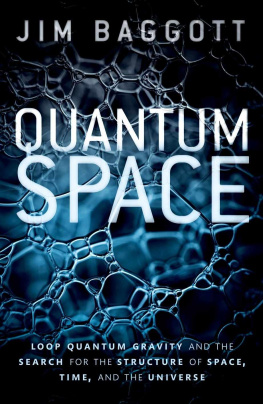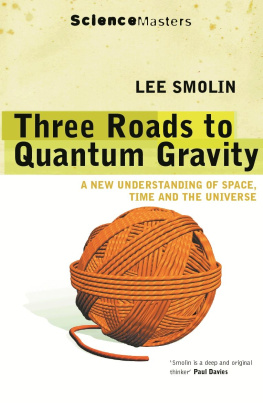Contents
Pagebreaks of the print version

Mathematical Models in Science
Mathematical Models in Science

Olav Arnfinn Laudal
University of Oslo, Norway

Published by
World Scientific Publishing Europe Ltd.
57 Shelton Street, Covent Garden, London WC2H 9HE
Head office: 5 Toh Tuck Link, Singapore 596224
USA office: 27 Warren Street, Suite 401-402, Hackensack, NJ 07601
Library of Congress Cataloging-in-Publication Data
Names: Laudal, Olav Arnfinn, author. | Laudal, Olav Arnfinn. Geometry of time-spaces.
Title: Mathematical models in science / Olav Arnfinn Laudal, University of Oslo, Norway.
Description: New Jersey : World Scientific, [2021] | Includes bibliographical references and index.
Identifiers: LCCN 2021015319 | ISBN 9781800610279 (hardcover) |
ISBN 9781800610286 (ebook for institutions) | ISBN 9781800610293 (ebook for individuals)
Subjects: LCSH: Mathematical physics. | Geometry, Algebraic. |
General relativity (Physics) | Quantum theory.
Classification: LCC QC20.7.A37 L39 2021 | DDC 530.1563/5--dc23
LC record available at https://lccn.loc.gov/2021015319
British Library Cataloguing-in-Publication Data
A catalogue record for this book is available from the British Library.
Copyright 2021 by World Scientific Publishing Europe Ltd.
All rights reserved. This book, or parts thereof, may not be reproduced in any form or by any means, electronic or mechanical, including photocopying, recording or any information storage and retrieval system now known or to be invented,without written permission from the Publisher.
For photocopying of material in this volume, please pay a copying fee through the Copyright Clearance Center, Inc., 222 Rosewood Drive, Danvers, MA 01923, USA. In this case permission to photocopy is not required from the publisher.
For any available supplementary material, please visit
https://www.worldscientific.com/worldscibooks/10.1142/Q0302#t=suppl
Desk Editors: Aanand Jayaraman/Michael Beale/Shi Ying Koe
Typeset by Stallion Press
Email:
Printed in Singapore
To
Inger
Acknowledgment
This work could not have been done, at least not so quickly, under the strain of the COVID-19 pandemic, without the very professional help of Professor Arvid Siqveland. He helped the author and the Editors by being the intermediate between us, translating the old style Latex version into the WS-book system. In doing this work, he also corrected several mistakes and many typos. As a coauthor of the basic reference Eriksen et al. (2017), he also served as a much needed referee.
Contents
Chapter 1
Introduction
Mindful of the well-known quotation,
Vos calculs sont corrects, mais votre physique est abominable: (Albert Einstein 1927 `a George Lematre),
I shall start by declaring my cards.
1.1 Philosophy
In this note, I shall try to explain my belief in the usefulness of mathematical models in science. I assume that this will seem as an utter waste of time to most mathematicians and, I guess also, to most contemporary physicists. And very few will notice the difference if I replace mathematical models with purely mathematical models. I dont blame them. I shall have to work a little to explain the difference that I see.
The present struggle in theoretical physics, to find a reasonable common ground for general relativity theory (GRT) and quantum theory (QT), has spurred a kind of opposition, making philosophers of science (PS) talk about abuse of mathematics in physics, see Earman (1989), for a good exposition. Most of this opposition may be considered as pretty far-fetched, or simply due to a rather poor background in modern mathematics. But there are certainly voices that should be listened to. Some of these question the formalism, or the unnecessary abstraction of the models in use. Some are even more specifically attacking the kind of Geometry used in models, or they are suspicious of those that find more inspiration in self-consistent mathematical abstractions, than in nature (Meschini, 2008).
However, a story explaining the workings of Nature on a real phenomenon, should, since Galilei, be written up in a mathematical language, depending more and more on (different forms of) Geometry. I assume that almost everyone having thoughts about this, would agree.
This story could reasonably be called a mathematical model of our understanding of the Nature we live in, so where is the problem?
Part of the problem lies, obviously, in our different understanding of the concept Nature, the workings of which we want to describe. And maybe also, in our very different relations to the concept of Understanding. Suppose the story is written in a perfectly coherent mathematical language; is that enough for the one that understands the mathematics, to understand the subject matter? Obviously not, there is a problem of translation, from the mathematical language to some unknown protolanguage, still haunting us. A point in space, what is that? Except a very small stone that once caught my eyes?
So, how do we understand the workings of Nature? Well, we have the mathematical models, like GRT and QT, that have been amazingly useful during the last centuries. We may think we understand the physical reality underlying both, but we cannot hide the fact that they refuse to be fused into one theory, based on one model, explaining all of physics. And this lack of unity seems to bother most of us.
Let us look at gravitation, and the GRT. Since Einsteins field equation is dependent upon the stressmasscharge tensor, see , and the mathematical model for this tensor is written in the language of differential geometry, Einsteins Hole problem (see Earman, 1989), becomes a philosophical problem. Is it the physics, expressed in the equation, that is the problem, or is it the Differential Geometry? Einstein and all his co-workers used differential geometry, instead of, say Algebraic Geometry. Now, differential geometry has (too) many functions, admitting the possibility of forming a mathematical hole in the tensor, algebraic geometry does not. Is this telling us that, maybe, Newton and Leibnizs differential calculus is not the best mathematical tool for understanding the problem?
QT is also, in most textbooks, and certainly for most physicists, a theory of differential operators acting on very complicated complete (normed) vector spaces, usually just referred to as the Hilbert space. However, in an obvious sense, it is fundamentally an algebraic theory. And the natural geometric picture, might well be algebraic geometry, although then necessarily a non-commutative version of the classical algebraic geometry.
In GRT and QT, there are also problems having nothing to do with the mathematical tools used. Are the notion of a Material Object, sitting in the Space of GRT, and the State Function, sitting somewhere in Hilbert Space, in QT, representing something in the real world? Are the protolanguage translations reasonably clear? Do they exist?
Many more problematic questions can be asked. Clearly, we talk about all of this with the help of our Memory, and we consider ourselves as Conscientious living subjects. Memory is, in some circles, considered as a result of natural processes in the theory of gravitational waves (see Sormani, 2017), and consciousness is being debated in mathematical biology (see Penrose and Hameroff, 2011).

